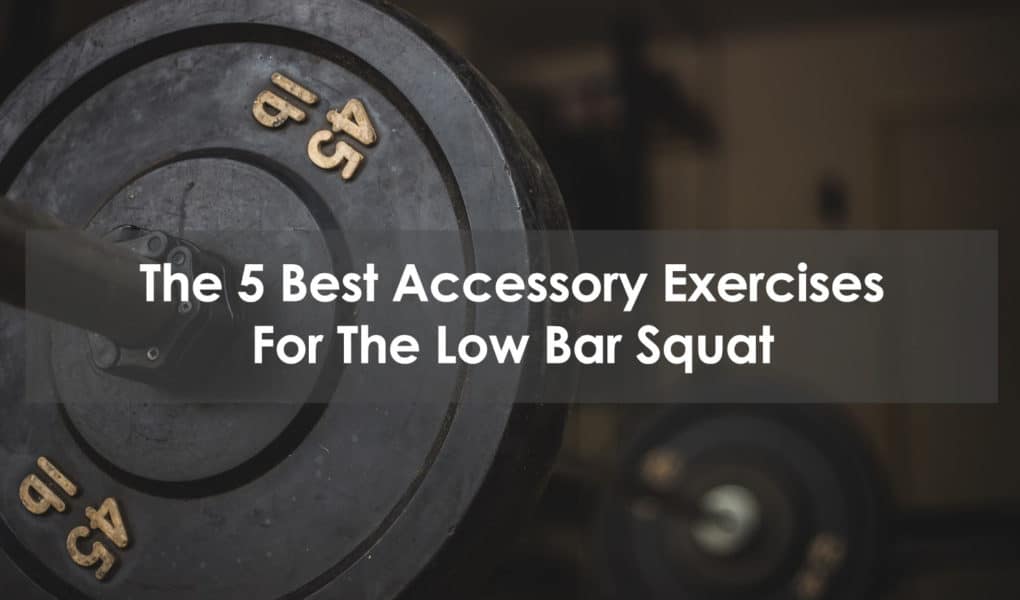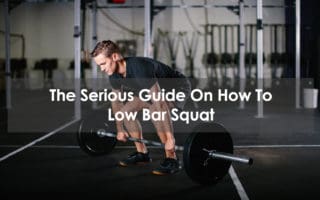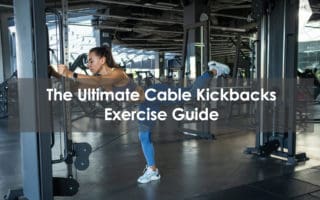The low bar squat is a slight variation on the more traditional back squat, wherein you place the bar slightly lower down your back so that it sits across your shoulder blades, rather than your traps.
The change in bar position makes this squat variation particularly challenging and research has found that low bar squats activate your muscles much more than high bar squats.
So, it can be a difficult movement to perform if you’re not used to it. To help, here are five of the best accessory exercises you can perform to target the major muscle groups activated in the low bar squat.
1. Hip thrusts
Whatever form of bar squatting you’re doing, you need strong glutes – this is where hip thrusts come in. This is an excellent exercise to target your posterior chain and build strength in those muscles at the back of your lower body. Plus, hip thrusts allow you to lift heavier weights than other accessory movements.
How to
- Sit on the ground with your knees bent at 45 degrees and a loaded barbell laid across your waist, resting on the floor. Ensure you are set against a bench with your upper back leaning on it.
- Holding the bar with an overhand grip, lean back against the bench and take the weight of the bar on your hips. This is the starting position.
- Push up through your hips so that your knees become bent at 90 degrees and your body creates a straight line to your knees. Squeeze your glutes at the top of the movement.
- Lower your hips and the bar back down to the starting position and repeat for 10-12 reps.
2. Romanian deadlift
This movement can help you build a strong squat by activating and working your entire posterior chain, in particular your hamstrings. These are the major muscles used in the low bar back squat and this deadlift variation is an excellent exercise for targeting them. The movement here also helps improve hip flexion and hip mobility, which will enhance your squat form.
How to
- Hold a loaded barbell or two dumbbells with your palms facing your body, arms straight. Keep a slight bend in your knees and hold the weight against the front of your upper quads.
- Slowly lower the weight down by bending at the waist, keeping a slight bend in your knees and your back straight.
- Stop once you feel a deep stretch in your hamstrings; this is a shorter range of motion than traditional deadlifts.
- Push your hips forward and lift the weight back up to return to the starting position. Repeat for 12-15 reps.
3. Pause squats
In essence, this is just a standard barbell squat with a pause in the middle of the rep when you’re in the full squat position, but that extra adjustment can help promote serious muscle growth. Plus, you’re targeting the exact muscles you’ll need for low bar squats, such as the quad muscle. You’ll want to use a lighter weight than you use for regular squats because the pause makes these more challenging.
How to
- Stand under a racked barbell with a slight bend in your knees, holding the bar with an overhand grip and the bar running across your upper shoulders/traps. You can alter the bar position so that it’s lower down your back if you prefer.
- Unrack the bar and take its weight. Hinge at the hips and bend your knees to move down into the squat stance, with your quads parallel with the floor.
- As these are pause squats, you should hold this position for a few seconds to increase your time under tension, then drive back up through your heels to return to the starting position.
- Perform 8-10 reps.
4. Bent over rows
While it’s obviously important to target the larger muscles in your legs to prepare for heavy squats, you should also ensure the muscles in your back and upper torso are properly trained. Bent over rows are a primary movement for back muscles like your lats and can help perfect your squatting technique.
How to
- Hold a bar with an overhand grip across the top of your quads, with a slight bend in your knees. Hinge forward at the hip slightly and have your arms straight, hanging below you.
- Bend at the elbows and pull the bar in toward your upper stomach. Squeeze your lats at the top of the movement.
- Lower the bar back down under control to the starting position and repeat for 12-15 reps.
5. Goblet squat
Moving through the same range of motion as the low bar back squat is, obviously, a great way to prepare for it. You can use a moderate weight or a heavy weight for this movement, as long as the heavy load doesn’t affect your form. These also engage your core by holding the weight in front of you, making them one of the best squat accessory exercises.
How to
- Your starting position should see your feet hip-width apart and you holding a kettlebell under your chin, against your chest with both hands.
- Squat down by hinging at the hips and bending your knees, keeping your chest proud.
- Push up through your feet to return to the starting position and repeat for 12-15 reps. The time under tension should be roughly 2 seconds squatting down and 2 seconds driving back up.
Other squat accessory exercises
- Split squats
- Box squat
- Bulgarian split squat
- Glute ham raise
- Hack squat
Conclusion
These five exercises are a great way to prepare your body for low bar squats. Some go through the same range of motion while others target relevant muscle groups, but they’re all worth including in your training cycles.
Frequently Asked Questions
What muscles do low bar squats work?
Like other compound exercises, they’re full-body exercises, but they mainly activate your glutes, quads, hamstrings, and core. Your hip flexors are also worked hard.
Can you squat more with a low bar?
As you can squat deeper with these and move the knee joint through a more generous range of motion, many people find they can squat more weight with the low bar technique.







